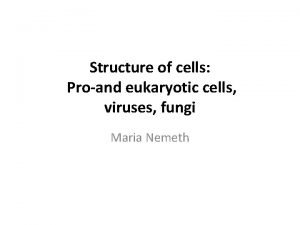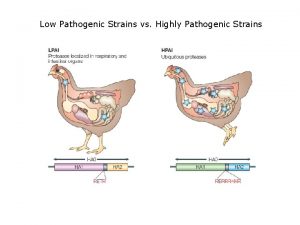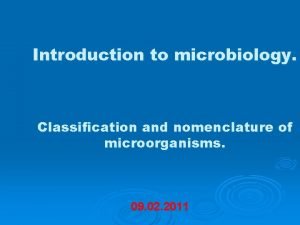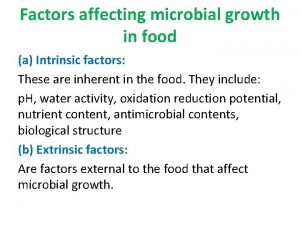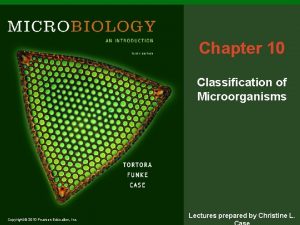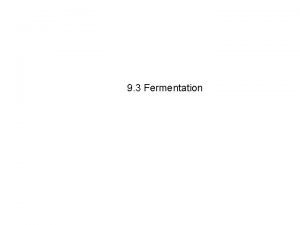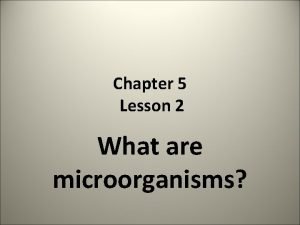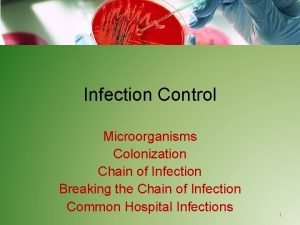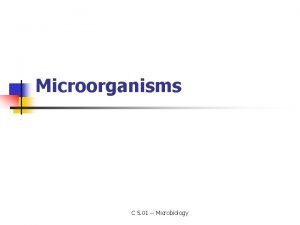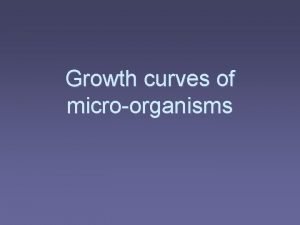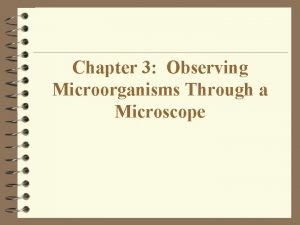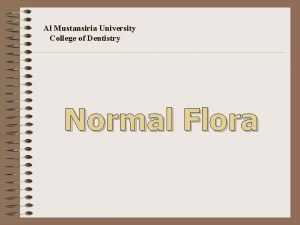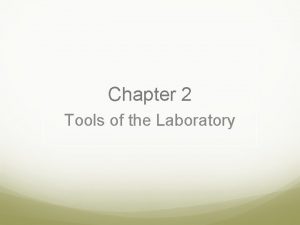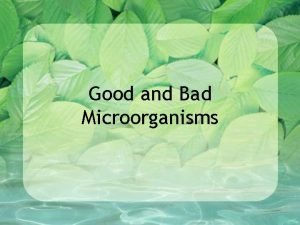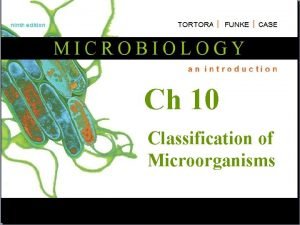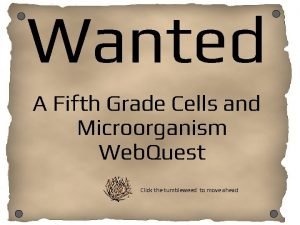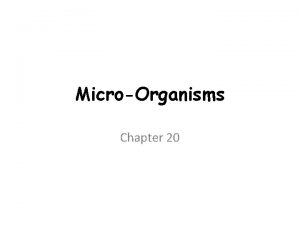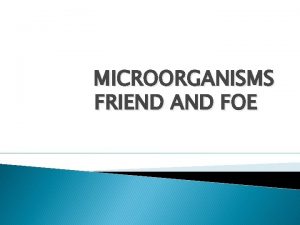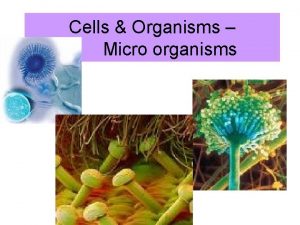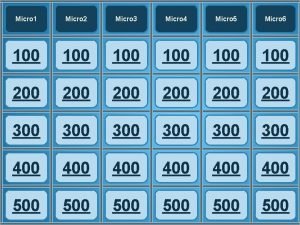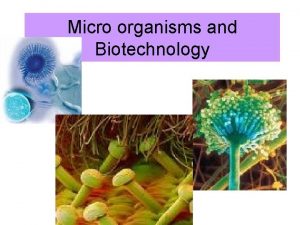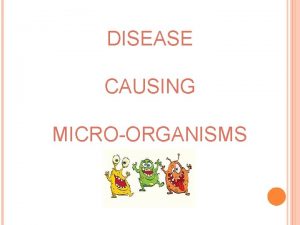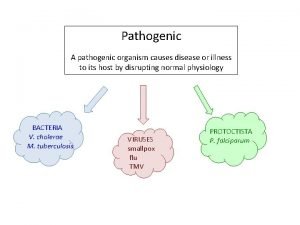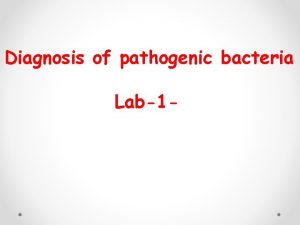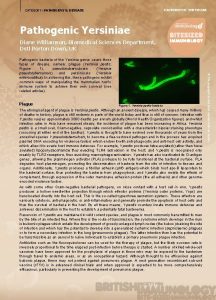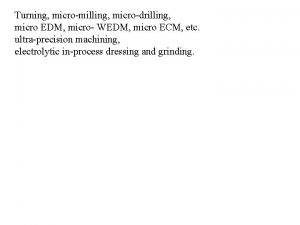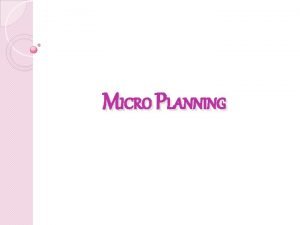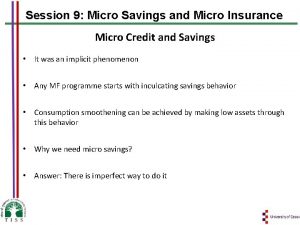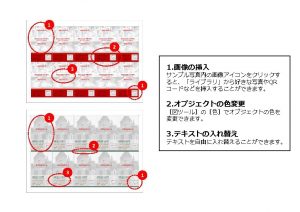Pathogenic Organisms What are Pathogenic Microorganisms Micro organisms





















- Slides: 21

Pathogenic Organisms

What are Pathogenic Microorganisms? Micro organisms that cause disease are called pathogens. Typically the term is used to mean an infectious agent Pathogens live on or in the host which interfere with the hosts metabolism – causing clinical symptoms of disease. Pathogens are able to gain access to an animal through various routes before attacking. If an animal eats, drinks, inspires or comes in contact with a substance that contain pathogens, it can become diseased.

In order to cause an infectious disease, a pathogen must • Gain entry in to a host Entry • Establish and multiply in the host tissue Establish Overcome Defences Damage Host • Overcome the normal host body defence for a time • Damage the host in some way

DISEASE TERMINOLOGY INFECTIOUS DISEASE Is one caused by micro – organisms, which can successfully invade, establish and grow within the hosts tissues. Eg bacteria and viruses NON – INFECTIOUS DISEASE This does not involve micro – organisms e. g Diabetes (metabolic disease).

CONTAGIOUS DISEASE This is a disease which is capable of being transmitted by direct or indirect contact from one animal to another. Infectious diseases Are often in this category. ZOONOTIC DISEASE This is a disease passed from animal to man

Transmission of diseases

What should I know about disease transmission? • Knowing the methods in which a disease is transmitted is important for implementing proper infection control measures. • Each disease has transmission characteristics based on the nature of the micro-organism that causes it. Direct Contact Indirect Contact

i m s n o i ss n a r T DIRECT CONTACT • Pathogens can be transmitted with direct contact with body fluids. • Feeding off spring • Intrauterine • Transplacental • Sexual contact during mating • Licking or grooming between animals • Biting

i m s n o i ss n a r T • • • INDIRECT CONTACT Body secretions e. g blood, urine, faeces Food Bowls Bedding Grooming equipment Aerosol transmission Contaminated food and water

i m s n o i ss n a r T Formite • A formite is an inanimate object which is capable of spreading disease. This can be: • Bedding • Feeding bowls • Grooming equipment • Litter trays • Clothing and shoes worn by a person

i m s n o i ss n a r T Vector • A vector is an organism which spreads disease from one host to another. • Commonly Invertebrates spread bacterial, viral and protozoan pathogens by two main mechanisms. • Either via their bite, as in the case of malaria spread by mosquitoes, or via their faeces. • Fleas can act as a vector for tapeworms.

i m s n o i ss n a r T Transmission • Airborne Pathogens themselves are incapable of propelling themselves through the air. As such, they rely on airborne particles for transmission via the air. Transmission is achieved in the following ways: • Respiratory droplets – coughing and sneezing can transmit large droplets infected with pathogens capable of causing common cold and influenza-like infections. • Dust – contains dead skin cells that can contain harmful bacteria and spores. • Water – transmission can occur in small droplets from infected sources e. g. legionella via untreated shower heads.

Bacteria Endoparasites Viruses Pathogenic Organisms Ectoparasites Fungi Protozoa Prions

Bacteria • Bacteria are microscopic, single-celled organisms. • Some bacteria live in the bodies of people and animals— on the skin and in the airways, mouth, and digestive, reproductive, and urinary tracts—often without causing any harm. Actually we can benefit from these types of bacteria. • Only a few kinds of bacteria cause disease. They are called pathogens. Bacteria can grow and reproduce only when the environmental conditions are correct and suitable for growth. • Bacteria can cause disease by producing harmful substances (toxins), invading tissues, or doing both.

Bacteria • Bacteria are prokaryotes, (lack a welldefined nuclei and membranebound organelles, and with chromosomes composed of a single closed DNA circle).

Bacteria - Classification by shape • • Bacilli – Cylindrical / rod shaped Vibrios – curved bacilli Cocci – spherical singular Diplococci – a pair of cocci Streptoccci – chains of cocci Staphylococci – irregualar grape like clusters of cocci Spirilla – spiral or helical

• http: //www. youtube. com/watch? v=2 xcd. Yl. Cjie I

Bacterial Diseases • Groups of very small bacteria are responsible for a number of diseases in animals including: Bacterium Disease Causes Shape Disease Transmission Salmonella Diarrhoea Rod/ Bacillus Direct / indirect contact Campylobacter Diarrhoea Curved Rods Direct / indirect contact Bordetella Bronchiseptica Kennel Cough Short Rods Direct / indirect contact Leptospira Leptospirosis Coiled Direct / indirect contact Staphylococcus Pyoderma Cocci Direct / indirect contact

Pathogen Symptoms Impact on Health Species Transmission Zoonotic Prevention Leptospirosis (bacteria) Very dull lethargic Vomiting diarrhoea Jaundice High temperature Bacteria attack liver and kidney Dog Fox Cattle, Sheep, Goats, Pigs, Horses Via infected Urine Vaccination Correct Hygine PPE Pathogen Symptoms Impact on Health Species Transmission Zoonotic Prevention Kennel Cough (bacteria) Dry hacking cough Possible nasal discharge Runny eyes / nose May get secondary infection Dog Aerosol droplets Vaccination Prevent contact Pathogen Symptoms Impact on Health Species Transmission Zoonotic Prevention Salmonella (bacteria) High temperature Dog Raw uncooked food Make sure meat is cooked Gastroenteritis Abdominal pain Yes No yes

In pairs 1. What is the name of a micro organism that causes disease 2. Name 5 types of pathogens 3. Give three examples where a pathogen can be passed on via direct contact 4. Give three examples where a pathogen can be passed via indirect contact 5. Name two bacterial pathogens and their symptoms

In pairs 1. What is the name of a micro organism that causes disease – A Pathogen 2. Name 5 types of pathogens – Bacteria, virus, fungi, prions, protozoa, ectoparasite, endoparasite. 3. Give three examples where a pathogen can be passed on via direct contact - Feeding off spring, Sexual contact during mating, Licking or grooming between animals, Biting 4. Give three examples where a pathogen can be passed via indirect contact – Body secretions , Food Bowls, Bedding, Grooming equipment, Aerosol transmission, Contaminated food and water 5. Name two bacterial pathogens and their symptoms
 Mikael ferm
Mikael ferm Non pathogenic definition
Non pathogenic definition Low pathogenic avian influenza
Low pathogenic avian influenza Classification of microbiology with example
Classification of microbiology with example Why do organisms interact with other organisms
Why do organisms interact with other organisms Unicellular and multicellular
Unicellular and multicellular Intrinsic factors affecting microbial growth in food
Intrinsic factors affecting microbial growth in food Gammaproteobacteria dichotomous key
Gammaproteobacteria dichotomous key Fermentation in microorganisms
Fermentation in microorganisms Harmful microorganisms
Harmful microorganisms Tuberclerosis
Tuberclerosis Major groups of microorganisms
Major groups of microorganisms Microorganisms
Microorganisms Limitations of light microscope
Limitations of light microscope What is the microorganisms
What is the microorganisms Protist wanted poster
Protist wanted poster The five i's of studying microorganisms
The five i's of studying microorganisms Microorganisms species
Microorganisms species Biogas microorganisms
Biogas microorganisms What is the microorganisms
What is the microorganisms Microorganisms meaning
Microorganisms meaning Microorganism wanted poster
Microorganism wanted poster

